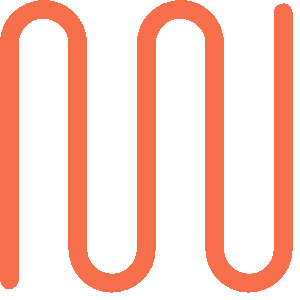Superhuman’s Winning Marketing Strategy: A Case Study
Email client Superhuman drives intrigue, interest, and ultimately, customer loyalty with its novel grassroots marketing efforts.
Recently, I’ve become fascinated by the email client Superhuman. For those new to the product, Superhuman has inspired an almost cult-like following among its users. It has a novel — and wildly successful — marketing strategy. By relying almost entirely on its user base to engage in a unique form of grassroots marketing, Superhuman has managed to become one of the hottest tech companies — while also remaining one of the least-advertised.
What is Superhuman?
Superhuman is a fast, powerful, beautiful email client. The company’s founder, Rahul Vohra explains in an article with First Round how they carefully surveyed users and doubled down on the features that matter — automation and an impressive suite of shortcuts that streamline common email tasks. Superhuman even allows for practically keyboard-only operation, meaning that you won’t get slowed down by reaching for a mouse.
The UI includes a detailed view of each of your contacts, allowing you to access information quickly and easily. Simply hovering over an email address gives you the option to copy. Once you’re done writing and sending an email, hit E to archive that conversation and automatically open the next.
Superhuman also takes a surprisingly hands-on approach to in-app help and feedback — it not only offers but requires a 30-minute onboarding call for any new subscriber.
In short, it’s a highly specialized product for a very specific audience — not everyone gets a dopamine rush from hitting inbox zero, and only a handful of us can get excited about a 30-minute Zoom call with an email client account executive. But Superhuman is hyper aware of its target market, and its marketing strategy reflects that.
Superhuman’s Unique Marketing Strategy
Superhuman doesn’t engage in formal advertising, so most users find out about the product one of two ways: through the press, or through current users. The brand gets plenty of press attention due to the high-profile founding team and their unique product. Their system includes a standard email signature with a link to Superhuman, so correspondents of Superhuman users can check out the product for themselves.
It also helps that Superhuman initially targeted a group of well-connected users — for instance, Camille Ricketts, currently Head of Marketing at Notion, formerly First Round Capital, Tesla and more. Their users are highly productive, email-dependent people who are always on the lookout for the latest productivity hack.
To be sure, a marketing approach like this only works for companies that have their logo, name, messaging, website, and above all, product or service on lock. Otherwise, an advanced strategy like this is worse than nothing.
Superhuman — Or How I Learned to Stop Worrying and Embrace the Hype
Much of its marketing strategy is built around protecting its Net Promoter Score, or its overall customer satisfaction: learn more in Rahul Vohra’s First Round article, mentioned above. To do this, it recruits customers in a unique way. Cards on the table, I am a fan of Superhuman, and part of how they pulled me in is their unique joining and onboarding experience.
Joining was difficult
If you want to use Superhuman, you can’t just download the software — the CTA on the website only allows you to “Request Access.” From there, you end up on a waiting list.
Like a list for an exclusive night club, existing Superhuman patrons can see who’s on the waitlist via the software’s right sidebar. They won’t just see your name — they’ll see your contact info, company and role, and LinkedIn account. They’ll also be given the option to refer you; if they hit the “Refer” button, you’ll be introduced to onboarding and get Superhuman access immediately.
That’s how I almost gained access to Superhuman. I noticed the Superhuman link in the signature of a fast-emailing marketing expert in my network, who was kind enough to refer me. Superhuman then sent me a survey about the features that I wanted from the platform. When I filled it out, I received a message in reply…explaining that I wasn’t to be given access, because it didn’t yet have the features I needed.
This, of course, made me even more interested in Superhuman. A few months later, I filled in the survey again (as though they might have changed their minds) and was granted access. While it’s possible they’d added the features I requested, I doubt it. Rather, I suspect asking twice did the trick — the people who get in are the people who really, really want access. (Update: A little bird told me asking twice was not the trick — Superhuman had relaxed their requirements before I asked the second time.)
Onboarding was personal
Once accepted, you still don’t receive access to the software. Rather, you need to book a 30-minute onboarding call, in which a Superhuman representative will walk you through all the features, explaining the installation process and answering any questions you may have.
This unusual onboarding process further vets the user base, ensuring that anyone who’s using the product is willing to invest half an hour into learning to use it correctly. It also promises that anyone using Superhuman understands the product and its features well — shortening the learning curve and eliminating early frustration that might generate disgruntled users or bad reviews.
When I completed the onboarding process, I was already an enthusiastic Superhuman user. However, if the product wasn’t as impressive as it is, this would be very different. Exclusivity and jumping through hoops can build intrigue and pull in a new customer — but, if the product doesn’t live up to the hype, it’s unlikely to inspire loyalty.
Why This Works
Superhuman’s marketing and onboarding process is notable for its originality — but why does it work so well? To sum up:
- They supercharge demand by denying you access. People want nothing more than what they can’t have, and Superhuman plays on this effect by making potential users jump through hoops to gain access — a stark contrast to the typical, needy, kick-the-door-down-with-marketing-emails sales funnel.
- They activate their user base. Via the power of referrals, Superhuman’s users become their marketers. Anyone can recommend Gmail, and anyone can get it — only Superhuman users can refer, and only those who have been referred can hop to the front of the queue.
- They dominate a niche market. Superhuman’s primary user base consists of the Silicon Valley set, a tightly networked group with similar interests. This strategy is best explained in Peter Theil’s Zero to One, in which he proposes that channeling your marketing to a tight-knit group offers better results. Look for dense networks, and serve them well.
- They select for customers who already like them. In addition to the platform’s lightning-fast customer service and robust onboarding support, their arguably onerous onboarding process creates a self-selecting group of users who are already primed to enjoy the product.
Essentially, Superhuman’s marketing strategy relies on creating a cycle that selects for people who like them, who are kept happy with great support, and who get even more excited because they can refer their friends. Their friends then gravitate to the product, are primed to like it and become excited by their “golden ticket” — and the cycle starts again.
Related Insights
We’re looking forward to working with you, too.
Start conquering the digital terrain today.





